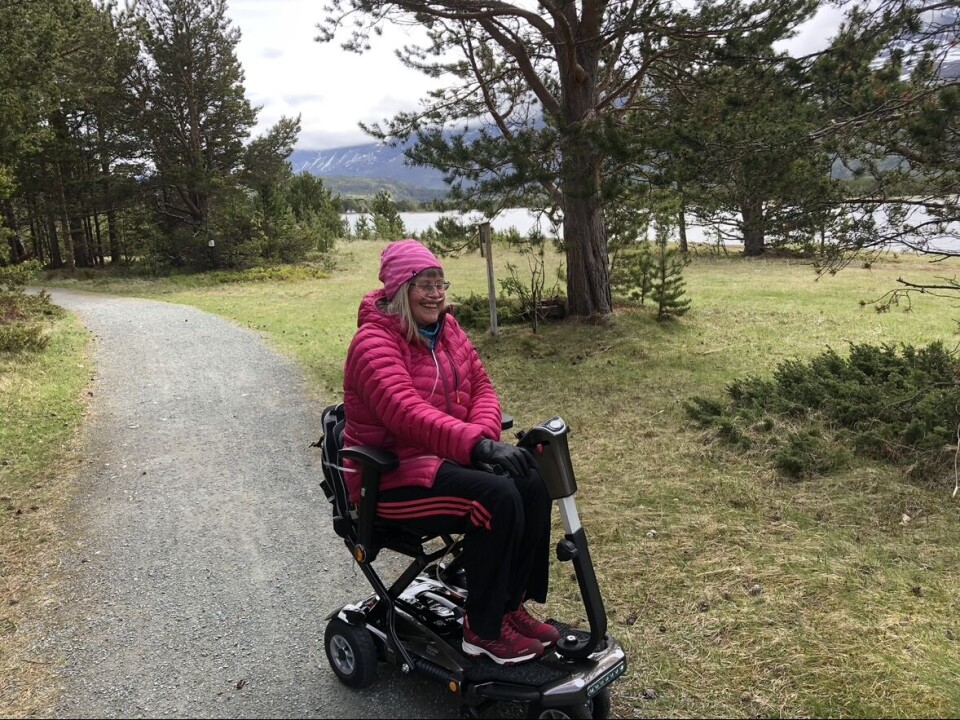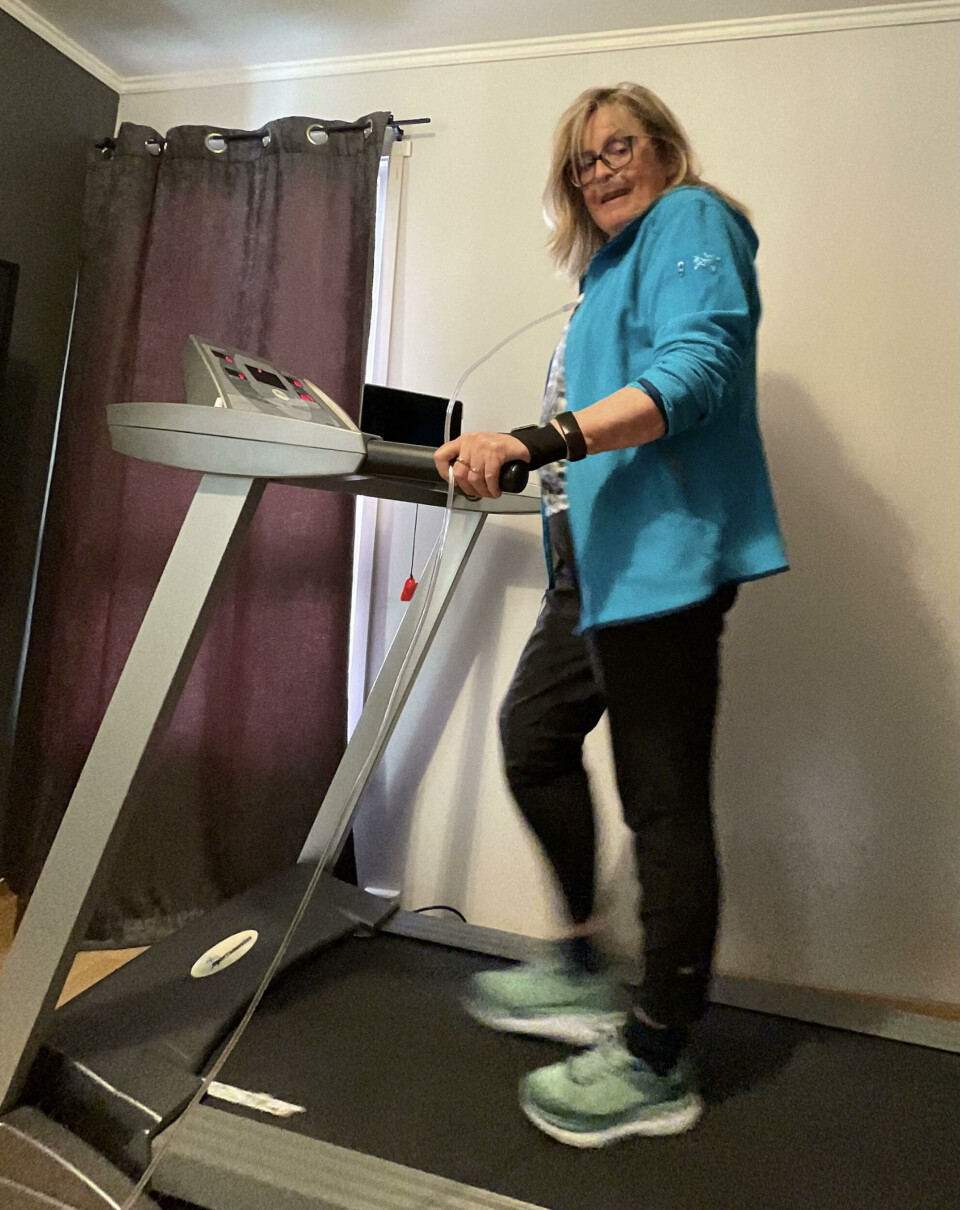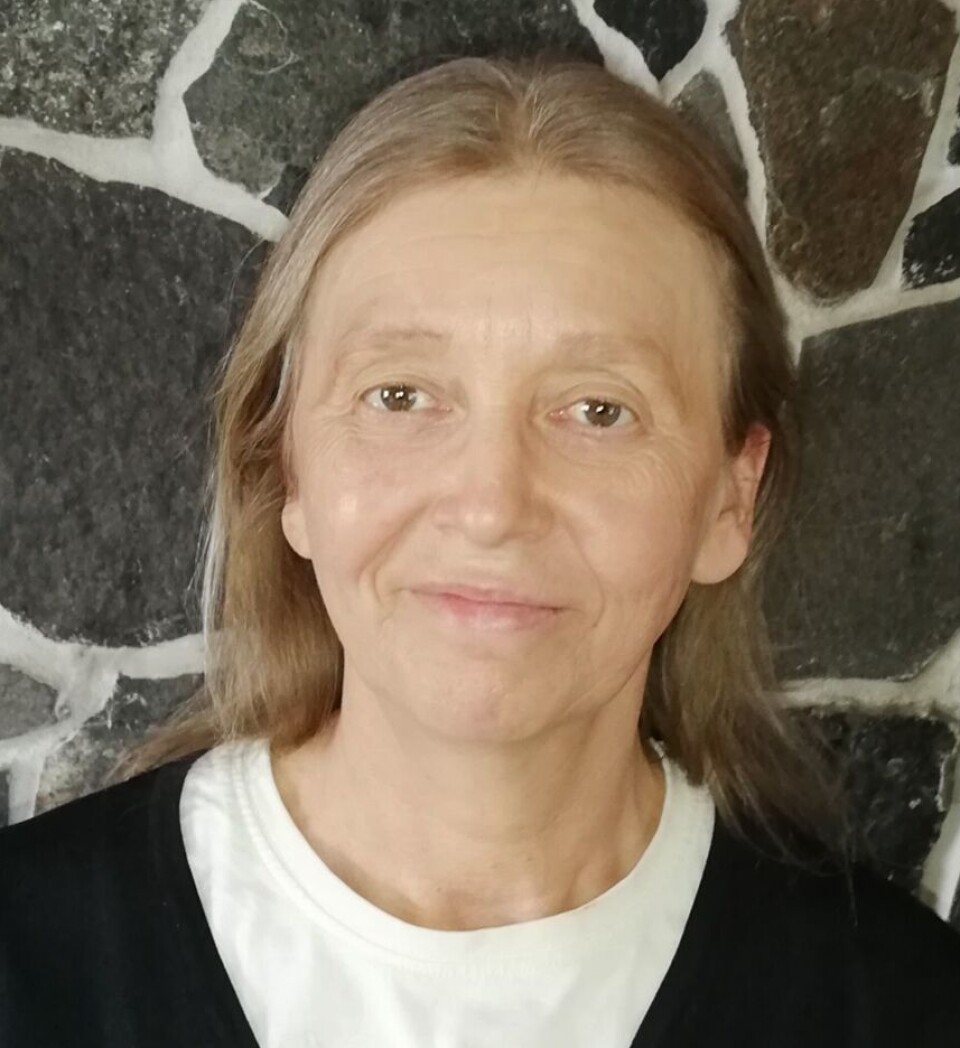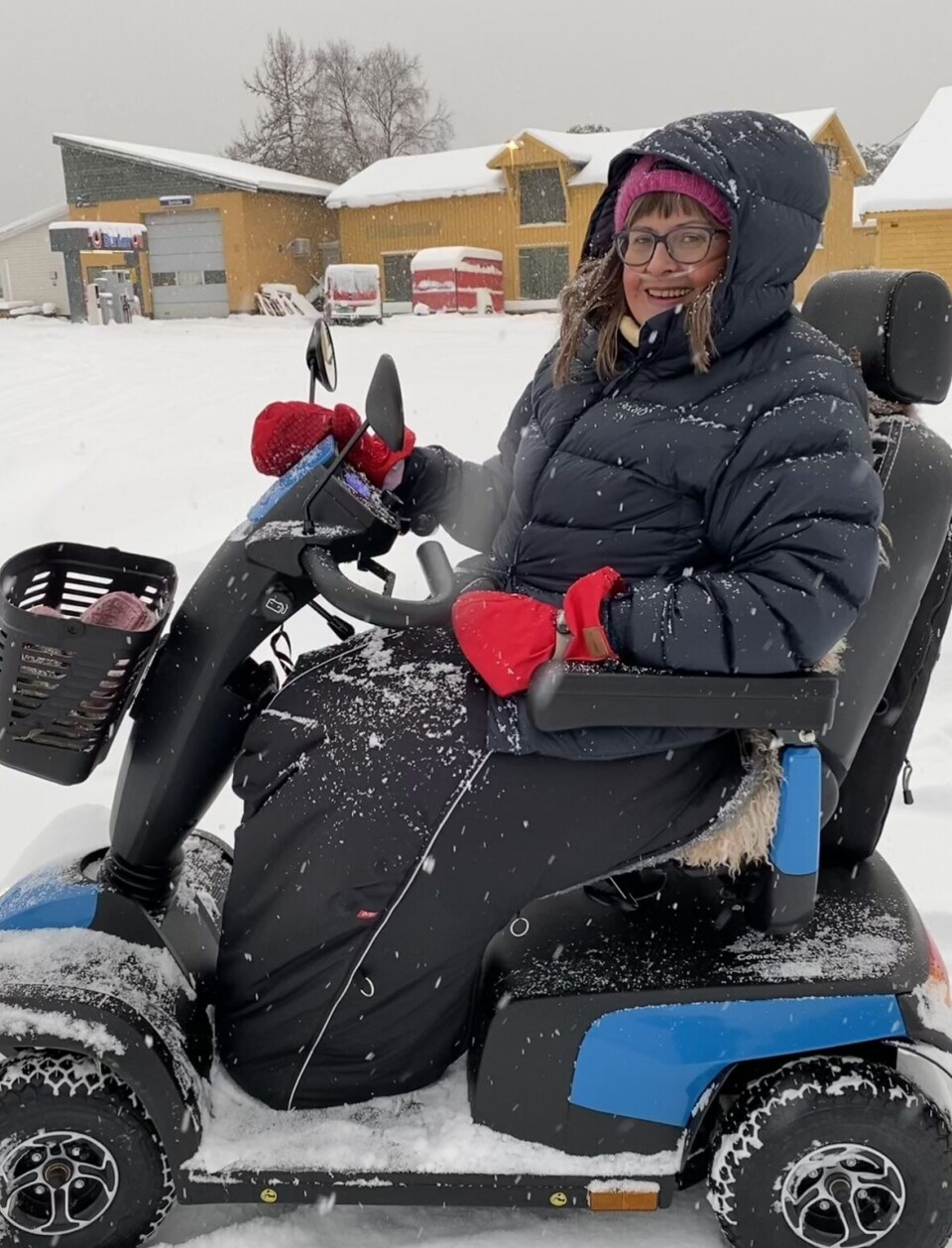THIS ARTICLE/PRESS RELEASE IS PAID FOR AND PRESENTED BY the Norwegian centre for E-health research - read more

COPD patient received home training: “My fitness improved, I could manage more, lost weight, and felt cared for"
Home exercise led to 40 per cent fewer hospitalisations for patients with COPD.
“We think this is a fantastic result. Exercise has a very big effect on these patients," Professor Paolo Zanaboni says.
Chronic obstructive pulmonary disease (COPD) is a major burden for both patients and society.
The disease causes, among other things, a narrowing of the airways and breathing problems. The lungs can become damaged and clogged with mucus. Symptoms include wheezing, coughing, spitting up, constant lung infections, fatigue, and depression.
Researchers have now investigated two low-threshold interventions. Both resulted in an equal reduction in hospitalisations for COPD patients.
The interventions also improved overall health and increased exercise capacity.
“My fitness improved, I could manage more, developed better habits, lost weight, and felt cared for,” Gro Hjertnes Bærøy says. She is a COPD patient who took part in the research project iTrain.
Inexpensive measures

New types of interventions can have major effects for patients with this disease, according to the recent research findings.
“It was great to be involved in the research. I still use the treadmill I was given,” Bærøy says.
Paolo Zanaboni, a professor in telemedicine and e-health at the Norwegian Centre for E-health Research, has spearheaded the work.
“The findings are particularly important because Norway and many other countries have far too poor a rehabilitation programme for COPD patients in terms of accessibility,” he says.
According to Zanaboni, a reduction in hospitalisations similar to that achieved by the researchers could have an enormous impact on the healthcare system.
“The measures we tried are relatively inexpensive. And not least: fewer hospitalisations means that patients feel better,” he says.
Just as good
To the researchers' surprise, self-training and telerehabilitation worked equally well.
“This may indicate that there is a great need among COPD patients. It may also be related to the fact that the patients had a high level of intrinsic motivation, which means that little is needed to achieve a major effect,” Zanaboni says.
Due to the poor quality of the services, many of the patients are desperate.
“They have a strong desire to get help to get better. When they get an offer, they jump at it,” he says.
Zanaboni believes that the reduction in hospitalisations could be even greater if the rehabilitation services were more individually tailored to each patient.
“Some patients are quite independent. Others are not so well suited to handling home training alone and need closer follow-up,” Zanaboni says.

With and without follow-up
In the study, COPD patients who had been hospitalised at least once had a treadmill installed at home and received personal training on its use. They also received an individually customised exercise programme.
Two approaches were then trialled. One group engaged in self-training. These patients were provided with a brochure on exercise and a paper-based exercise diary. They were then left to their own devices.
The second group, in addition to the treadmill, received both a tablet and a pulse oximeter, and participated in so-called telerehabilitation. A physiotherapist provided guidance, monitored, and customised their training through video meetings and electronic messages, as well as by tracking oxygen saturation and heart rate.
These patients also had access to a specially-designed website where they could find their own training programme, keep both a diary and a exercise log, track their own progress, send messages to the physiotherapist, schedule video meetings, and facilitate goal setting and achievement.
“The physiotherapist had video meetings with the patients once a week for the first eight weeks. Then, only once a month, so it wasn't a particularly intensive intervention,” Zanaboni says.
The two exercise groups were compared with a control group where patients only had existing healthcare services available to them.
Fantastic results
A total of 120 COPD patients from Norway, Denmark, and Australia participated, randomly and equally divided between the three groups. The two-year follow-up is unique in the field, as previous studies have not followed patients for longer than one year.
Both self-training and telerehabilitation resulted in as much as 40 per cent fewer hospitalisations compared to the control group during the study period. This aligns with what has been documented in the research literature for conventional pulmonary rehabilitation.
“The difference is that the effect of conventional rehabilitation usually only lasts for 6-12 months. The effect of our interventions lasted for the entire two-year period,” Zanaboni says.
Both approaches also improved the patients' health status for one year and increased their exercise capacity throughout the entire two-year period.
“We think this is a fantastic result. Exercise has a profound impact on these patients,” Zanaboni says.
Patient Bærøy, who has congenital COPD, shares that receiving telerehabilitation had an effect on her motivation.
"I go to experience how effective the training was. When the study ended, I and many of the other participants wanted it to continue,” she says.
The patients who participated in the pilot study received somewhat closer follow-up from a physiotherapist than those involved in iTrain.
Training created a sense of security
Linda Aarøen Lien is the physiotherapist who followed up the Norwegian study participants with telerehabilitation, both in the pilot study and in iTrain. She works at Helsepartner Rehabilitation, Skibotn department in Troms and Finnmark, formerly LHL Clinics Skibotn.

“COPD patients who have not undergone rehabilitation are in great need of knowledge about their own bodies, how exercise affects them, and what they can do to adapt exercise to their own challenges,” Lien says.
Exercise can trigger anxiety in patients with COPD. Breathing may feel heavy, and the body may start to produce more mucus at higher heart rates and breathing rates. Through telerehabilitation, patients learned techniques to clear mucus, breathing techniques, and how to cope with seizures.
“The anxiety that arises during seizures or increased mucus production worsens the situation,” Lien explains.
She describes how the patients who received telerehabilitation gradually managed to figure things out for themselves.
“The training and follow-up created a sense of security. Some began to experiment and test their own limits. Eventually, they realised that the boundaries could be pushed further. The result was improved quality of life,” Lien says.
COPD patients are not offered pulmonary rehabilitation
COPD cannot be cured. However, the progression of the disease can be slowed or halted with rehabilitation, exercise, and medical treatment. Some patients can even get better, although damaged lung tissue cannot be repaired.
The disease affects many people. It is the cause of approximately six per cent of all global deaths and is ranked as the third leading cause of death worldwide by the WHO. According to the Norwegian Institute of Public Health, up to seven per cent of the Norwegian population over the age of 40 have COPD.
“It's incredible, but most COPD patients in Norway still do not receive offers for pulmonary rehabilitation,” Zanaboni says.
This is despite the well-documented positive effects of such rehabilitation in the research literature and strong recommendations from the Norwegian Directorate of Health for multidisciplinary pulmonary rehabilitation involving at least a doctor, nurse, and physiotherapist.
The Directorate also has strong recommendations on what interdisciplinary pulmonary rehabilitation should include, from patient education and physical exercise to mapping and dietary counselling.
International data shows that only 1.5 per cent of COPD patients who have been admitted to hospital participate in a pulmonary rehabilitation programme.
“These are extremely low figures,” Zanaboni says.
Limited funds and resources
No one has an overview of how many COPD patients actually receive offers for or complete pulmonary rehabilitation in Norway, but a survey has been conducted on what the municipalities do.
In 2019, only five per cent of Norwegian municipalities were able to offer multidisciplinary pulmonary rehabilitation over several weeks. 21 per cent could offer some interventions that were not specifically adapted to patients with COPD.
These figures come from a report by the Western Norway University of Applied Sciences (HVL) based on a survey conducted in 2019 by the National COPD Council. The council was established by the Norwegian Heart and Lung Association (LHL).
The municipalities themselves explain the situation with various shortcomings, including financial constraints, prioritisation, and expertise to the patient base.
New guideline
The Norwegian Directorate of Health's guidelines for COPD patients were updated in February last year.
“It has addressed important challenges identified in the report from HVL,” Ingebjørg Skrindo says.
She is a senior adviser in the Directorate's Department of Municipal Health and Care Services.
However, the Directorate does not monitor whether the strong recommendations are being followed.
“It is important to remember that the guideline is fairly new. It is therefore a little early to assess whether it is being followed,” she says.
The previous guideline was issued in 2012, coinciding with the transfer of responsibility for rehabilitation from specialised health services to municipalities through the Coordination Reform.

The 2012 guideline also included strong recommendations for rehabilitation for COPD patients.
Costly hospitalisations
COPD patients who have been hospitalised once are at high risk of being readmitted to hospital again and again. According to the Norwegian Institute of Public Health, one in four COPD patients over the age of 67 who are hospitalised are readmitted within 30 days.
“An average hospitalisation of a COPD patient costs almost 4,650 USD,” Zanaboni says.
When the equipment for telerehabilitation was purchased, it cost less than 1,110 USD per patient. It was used in the study for two years, after which the participants were allowed to keep it and use it for several more years.
"Although it would be cost-effective for society in the long run, this is not the type of investment that municipalities can afford," physiotherapist Lien says.
Zanaboni believes that the socioeconomic calculation speaks for itself. On average, a COPD patient with a history of hospitalisation is admitted to the hospital almost twice a year, he explains.
Simple measures can greatly improve quality of life
Professor Zanaboni, physiotherapist Lien, and patient Bærøy all agree that COPD patients are not getting the treatment they need today. Instead, the available services are constantly being reduced.
“There have been cuts upon cuts. For example, when I lost access to liquid oxygen in 2020, it made me sicker. Many other COPD patients, including myself, also experience constant rejections from the Regional Assessment Unit when we apply for rehabilitation. A lot of people give up and don't have the strength to go that route,” Bærøy says.
Those who do manage to access pulmonary rehabilitation are often late in doing so.
“We receive patients who are far advanced in their COPD. They tend to be older individuals who have had COPD for a very long time. Then we think, ‘You should have come to us 20 years ago!’” Lien explains.
The Norwegian Institute of Public Health expects the number of people living with COPD to remain high in the future due to the increasing elderly population.
“The fact that services are constantly being cut back is not compatible with the growing need in society,” Lien says.
She mentions that there are many myths and misconceptions among both COPD patients and doctors.
“Some GPs don't even know that rehabilitation programmes are available. Others believe that patients have to be very ill to receive such an offer,” she says.
Due to many COPD patients having received little or inadequate medical follow-up, it often takes very little to significantly improve their quality of life, according to the physiotherapist.
Time for new strategies
Frode Jahren, the General Secretary of LHL, is also dismayed by the downgrading of COPD patients.
“Only a small proportion receive rehabilitation, and the waiting time is long,” he says.
In such a situation, Jahren believes that there may be a need to adjust strategies. He finds the research by Zanaboni and colleagues very interesting.
“The findings show that we can achieve a lot with relatively simple measures,” he says.
Jahren also believes that many municipalities are too small to have the expertise required for the rehabilitation of lung diseases as well as heart failure and musculoskeletal diseases.
COPD patients are not alone in facing inadequate rehabilitation services, the Secretary General emphasises. Over 20 organisations from user and professional communities have joined forces to demand a rehabilitation reform.
In addition, the Office of the Auditor General of Norway is conducting an investigation into rehabilitation services in the municipal health and care services and specialised health services. The investigation is scheduled to be published in the autumn of 2023.
“The Ministry of Health and Care Services should gather the best people around the table and figure out how to organise the rehabilitation services in a good and cost-effective way,” Jahren says.
He believes it is necessary to move in the direction that Zanaboni and colleagues' research points to.
“In other words, much more home-based rehabilitation and digital follow-up,” he says.
Reference:
Zanaboni et al. Long-Term Telerehabilitation or Unsupervised Training at Home for Patients with Chronic Obstructive Pulmonary Disease: A Randomized Controlled Trial, American Journal of Respiratory and Critical Care Medicine, 2022. DOI: 10.1164/rccm.202204-0643OC

This article/press release is paid for and presented by the Norwegian centre for E-health research
This content is created by the Norwegian centre for E-health research's communication staff, who use this platform to communicate science and share results from research with the public. The Norwegian centre for E-health researchis one of more than 80 owners of ScienceNorway.no. Read more here.
See more content from the Norwegian centre for E-health research:
-
Technology in the health and care sector: "This is not just about new gadgets"
-
Five Nordic and Baltic countries take a major step toward the future of health research
-
A digital chatbot can help you stay fit
-
Researchers' advice for better healthcare services: Listen to the patient!
-
Half of those who received mental health care found errors in their medical records
-
AI can understand your medical records: A new language model could revolutionise healthcare




































